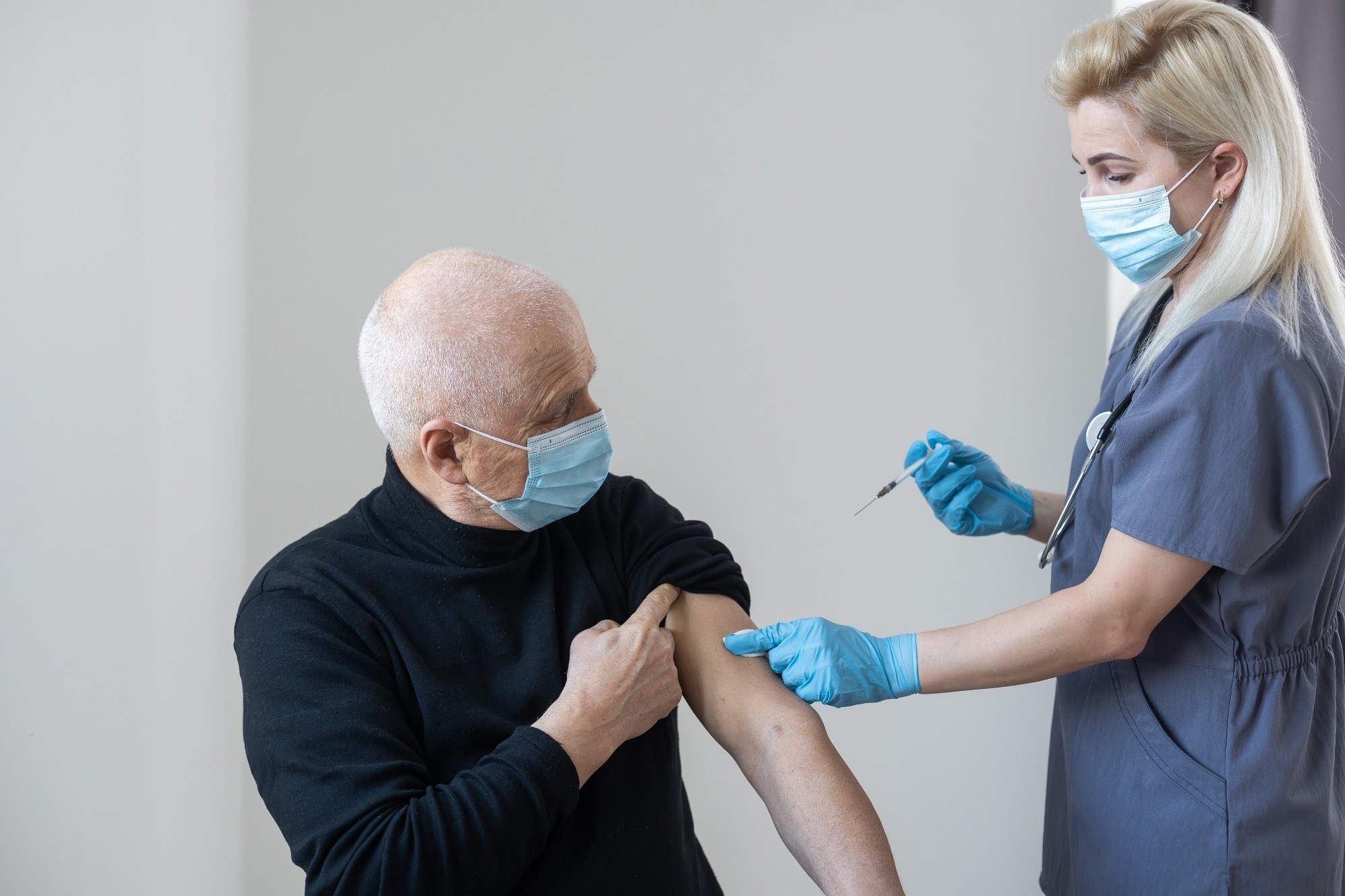A recent Scientific Reports study evaluated the humoral response in the elderly population after receiving the fourth mRNA vaccine against coronavirus disease 2019 (COVID-19).
 Study: Antibody response in elderly vaccinated four times with an mRNA anti-COVID-19 vaccine. Image Credit: Andrew Angelov / Shutterstock
Study: Antibody response in elderly vaccinated four times with an mRNA anti-COVID-19 vaccine. Image Credit: Andrew Angelov / Shutterstock
Background
The rapid transmission of severe acute respiratory syndrome coronavirus-2 (SARS-CoV-2) resulted in the COVID-19 pandemic. Despite the availability of vaccines, the pandemic is continuing due to the emergence of new SARS-CoV-2 variants. Some of these variants, such as the Omicron and Delta strains, can escape immune response induced after vaccination or natural infection. In addition, a sharp decline of antibody titers occurs over time. Subsequently, the protection level against the infection is reduced. Considering the depletion in antibody levels, a COVID-19 booster vaccination strategy has been implemented to restore the antibody level.
Few studies have assessed the antibody response after the fourth COVID-19 mRNA vaccination in adults. The existing studies indicated that compared to the first COVID-19 booster vaccination, the second booster (fourth COVID-19 vaccine) dose resulted in a minor increase of the neutralizing antibody (nAb) and the anti-RBD (Receptor Binding Domain) IgG antibody levels. Although this finding was based on a study population devoid of older adults, the poor antibody response raised questions about the utility of COVID-19 booster vaccination beyond the first.
Contradicting the aforementioned implications, several randomized clinical trials and retrospective studies revealed the benefits of a second COVID-19 booster, particularly for preventive hospitalization in the elderly population. However, none of these studies estimated specific IgG antibody or nAb levels in older populations.
About the Study
The current study evaluated the immune response following the first and second mRNA-based COVID-19 booster vaccination in an elderly population. The study cohort consisted of elderly residents residing in an assisted living facility. None of the participants were infected with SARS-CoV-2 at the time of recruitment, i.e., May to August 2021. However, COVID-19 cases appeared from January 2022, i.e., during the Omicron wave.
All relevant data linked to sociodemographic characteristics, frailty, current health condition, and current COVID-19 exposures and infections were obtained. Blood samples were collected between August 2021 and May 2022. Blood samples were collected at different periods, i.e., the first was collected around 194 days after the second vaccine dose, the second around 76 days after the third vaccine dose, and the third was collected around 99 days after the fourth vaccine dose. All participants were regularly assessed for COVID-19 using Real-Time Polymerase Chain Reaction (RT-PCR) or antigen test methods.
Study Findings
A total of 46 elderly residents with different levels of frailty were recruited in this study. The median age of the residents was 85 years of age. Around 87% of the cohort was female. All participants received COVID-19 vaccinations on the same day. The first booster dose was administered 203 days after the first dose of vaccination. The second booster dose was administered 150 days after the third dose. The entire cohort received the mRNA BioNtech-Pfizer vaccine. Based on the regular COVID-19 screening report, none of the residents contracted the infection from April 2020 to May 2022.
The serum IgG levels against the receptor-binding domain (RBD) of the SARS-CoV-2 virus of the elderly residents two and a half months after the first COVID-19 booster vaccination were 1987 BAU/ml. Similarly, the anti-RBD IgG levels three and a half months after the second booster dose measured 2025 BAU/ml.
The first blood sample indicated a low RBD IgG level, which improved after the third vaccine dose. However, after the second booster dose, the anti-RBD IgG level increased 1.5-fold compared to the titers estimated after the first booster vaccine dose.
The frailty scores of the study population ranged between 0 and 5, which indicated negative severe frailty. There was no difference in anti-RBD IgG titers between frailty categories in all three blood samples.
A significant increase in nAb was observed after two weeks of second booster vaccination. Although the majority of the residents reached NT50 titers over the limit of detection (LOD) against the Wuhan-based pseudovirus (psVWT), a few residents’ sera were below the LOD for the same.
Six residents reported breakthrough infection after receiving two booster doses. Among these participants, one was infected one week before receiving the fourth vaccine dose, while five contracted the infection between 32 and 121 days after the fourth vaccination. All participants who experienced breakthrough infection were female.
Participants with breakthrough infections developed mild to moderate infections and did not require hospitalization. These breakthrough infections occurred when BA.1 and BA.2 were dominant variants. All six individuals with breakthrough infection presented significantly higher NT50 values after the second booster vaccination. This finding implies that the immune system of these older adults continued to respond without exhaustion.
Conclusions
This study revealed that the fourth COVID-19 vaccination dose significantly increases the nAb level in the elderly population. These antibodies exhibited efficacy against the SARS-CoV-2 wild type and the Omicron variant, particularly BA.1. This study strongly supports booster vaccination in the elderly population to protect them from new SARS-CoV-2 variants.